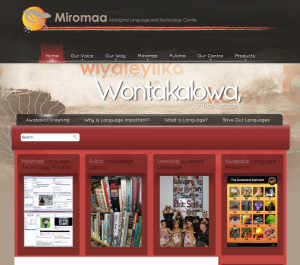I came across this blog post (“I am a Native American woman with White privilege“) from an Aboriginal colleague’s facebook feed, and it lead me to the personal blog of Misty Ellingburg, an Indigenous graduate student and writer. Her post describes some of her experience as identifying as Native American and being raised in her mother’s culture on a reservation, yet easily passing as ‘White’, which she believes absolves her from much of the racial prejudice visible people of colour face in society (she references the police violence against black Americans that have sprayed recent news headings, as an example). Her blog doesn’t have the most extensive archive, but she has made some interesting posts related to her experiences in life, many of which are related to her Native identity.
After reading her blog, I was curious about other Aboriginal-owned blogs, and went searching for others. I was ideally looking for a compilation or RSS feed that might have grouped together multiple titles, but other than finding a sub-heading of Aboriginal law blogs, I came up dry. I tried to find more blogs run by Aboriginal authors, but found my search somewhat limited to more ‘official’ (organizations or magazines) rather than individual projects. So from what I could find, below are a couple that I plan on exploring more:
Apihtawikosisan.com – a blog run by a Plains Cree-speaking Metis woman from Alberta, with lots of interesting articles and resources (and a great page dedicated to calling out appropriators of headdress).
The Rabble.ca blog of Dr. Pamela D. Palmater, a Mi’kmaw lawyer from New Brunswick, which includes a compilation of her articles on current issues.
If anyone reading this post knows of other Aboriginal-authored blogs, please feel free to include the addresses in a comment!
*Update:
Through CBC’s ‘New Fire’ program, I was able to find a blog run by weaver Meghann O’Brien, who is of Irish descent on her father’s side, and Kwakwaka’wakw and Haida descent on her mother’s side. Not only does she do stunning weaving work, her stylish blog has many fascinating posts related to her work and life experiences. Check out her wordpress site, Jaad Kuujus!
